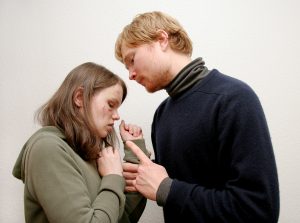Preventing Interpersonal Violence in Relationships
 As a therapist, I want to help survivors of dating violence, domestic violence, and abusive relationships recover their sense of safety and self-fulfillment in life.
As a therapist, I want to help survivors of dating violence, domestic violence, and abusive relationships recover their sense of safety and self-fulfillment in life.
And I want to do more. I want more people to know how grave the damage is to survivors of abuse and sexual assault. I want to see more action and education to stop dating and interpersonal violence and prevent it.
Artists and performers can be powerful allies for awareness. In a song “The Whole Damn Year” Singer songwriter Mary J. Blige explains the harrowing experience of a person living with relationship trauma:
Bad, how deep the pain is
Oh, you just couldn’t believe
And yes, I’m good on the surface
But I’m a mess, I’m a mess underneath.
See Winter took most of my heart
And Spring punched me right in the stomach
Summer came looking for blood
And by Autumn, I was left with nothing
It took a whole damn year to repair my body…
Lyrics from “The Whole Damn Year” by Mary J. Blige
Intimate partner abuse is so devastating and dangerous, we would hope it is extremely rare. Unfortunately, it is alarming to discover how prevalent and pervasive relationship violence actually is:
- During Adolescence: “Nearly 1 in 5 women and 1 in 7 men have experienced physical, emotional, and sexual violence in a relationship during their adolescent years, ” says the National Institute on Drug Abuse.
- During a Lifetime: 1 in 3 women and 1 in 4 men will experience relationship violence in their lifetime, says the One Love Foundation, created to end relationship violence through education, in memory of Yeardly Love, a college senior who was beaten to death by her ex-boyfriend.
Because it touches so many lives, now is the time to become better informed about dating violence. It might well occur within the reach of caring adults who are unable to see signs of problems or know how to help.
That is something we can change. By recognizing signs of possible trouble, and knowing how to find support for yourself or someone you care about, more of us can respond appropriately to this serious public health epidemic.
What Is Dating Violence?
Dating violence is also known as intimate partner violence, relationship violence, or dating abuse. It’s about control — it’s a pattern of actions, words, threats, and behaviors, says BreakTheCycle.org, that a person uses to gain control and power over a partner.
Dating violence occurs when a person uses intimacy to frighten, intimidate, and ultimately, control a partner’s whereabouts, communications, or actions.
People who experience intimate partner violence come from all walks of life. They can be male, female, gay, straight, affluent, educated, young or adult, and from any ethnic group or religion.
More women report violent intimate partner behavior (76%) than males (24%). It is most common among teens and young adults. Girls between the ages of 16 and 24 have the highest rate of intimate partner violence – almost three times the national average, reports LoveIsRespect.org. This organization also reports a special need to focus on high school aged populations:
- 5 million high school students in the U.S. experience physical abuse from a dating partner in a single year
- One in three adolescents experiences physical, sexual, emotional or verbal abuse from a dating partner — far exceeding other types of violence that youth experience
- The severity of violence is often greater in cases where the pattern of abuse was established in adolescence
Limited Knowledge and Awareness Are Part of the Problem
As stunning as these facts are, it is also hard to fathom the documented lack of awareness among adults — including parents. The need for proactive awareness is vital, because the vast majority of abuse victims do not tell anyone; and if they were to inform a nearby adult, most likely this person would not know what to do. It is our responsibility as friends, family, and caring adults to be informed and aware. According to surveys:
- 81% of parents believe teen dating violence is not an issue or admit they don’t know if it’s an issue (loveisrespect.org)
- Over 80% of high school counselors report they feel unprepared to address incidents of abuse on their school campus (breakthecycle.org)
- Only 33% of teens who were in a violent relationship told someone about it (loveisrespect.org)
Signs of Dating Violence
One of the reasons dating violence is so prevalent, is that many who are experiencing it do not understand they are victims. One benefit of the #metoo campaign is to help more people recognize the need to get help for the trauma of abuse in relationships. We need to know and be able to talk about what kind of behaviors may help us tell the difference between healthy relationships, troubled ones, and those that constitute abuse.
Relationship violence may include any one or combination of these experiences:
Physical abuse – the use of force to cause injury or fear – slapping, hitting, slamming doors, throwing things, or using a weapon; violent acts.
Emotional abuse, sometimes called verbal abuse – name-calling and put-downs are some of the most common forms. This includes stalking and attempts to isolate, monitor, intimidate, or humiliate. Perpetrators may threaten to hurt themselves or their partner if there’s a breakup.
Sexual abuse – one partner tries to control a partner’s sexual activity, without that partner’s free consent. Rape is one extreme example, but other sexual abuse includes comments that make a partner uncomfortable, demands to watch masturbation, to watch or take videos or pictures, unwanted touching, or impeding a partner’s access to birth control. It includes sexual activity perpetrated after drugs or alcohol have impaired the abused partner’s judgment.
Digital or cyber abuse – the abuser insists on knowing the passwords to the partner’s social accounts, email, and devices for the purpose of tracking and monitoring a partner’s activities. Constant texting about who the partner is with or threatening messages are important to take seriously.
In general, the appearance of unequal power and control are warning signs of relationship abuse. Abusers want compliance and secrecy and work to get and keep them through intimidation and fear.
Awareness is the key to self-preservation and the ability to help others avoid or escape relationship violence.
Signs a Teen’s Partner May Be at Risk of Becoming Abusive
Here are signs that a teenage partner may have tendencies toward abuse, according to the National Institute on Drug Abuse (NIDA) for Teens. Such a partner may:
- Have difficulty controlling anger and frustration
- Show limited social skills
- Use drugs and/or alcohol
- Act on jealous, insecure, or possessive feelings
- Constantly put his or her partner down
- Check the partner’s email or phone without asking permission
- Throw things, destroy personal property
- Isolate a partner from that person’s family, friends, or loved ones
Abuse may happen during a partner’s mood swings, when tempers flare, or when you hear about the couple fighting. The abused person may try to minimize the situation, working “not to upset the apple cart.” A young person experiencing abuse may say they only want to be with their partner, giving up ties to family and friends, and other activities the partner enjoys.
Risk Factors – Who May Be Vulnerable to Dating Abuse
It can be hard to imagine why any person would allow a partner to hurt them and frighten them, while remaining in the relationship. A number of common risk factors may make some individuals more vulnerable to the risk of relationship abuse:
A trauma history — Adverse experiences, especially in childhood, can impair a person’s ability to function well psychologically, emotionally, and in relationships. Especially when the trauma is not recognized and treated, the survivor may have a confused understanding of trust and have difficulty setting healthy boundaries
Depression or anxiety — Research shows that depression or anxiety may be linked to increased risk for sexual dating violence. Depression is also an outcome or a result of experiencing abuse, which enables an abusive relationship to become ongoing. It also contributes to suicidal thinking that is found in association with dating violence victimization, reports the National Online Resource Center on Violence Against Women.
Emotional dependence, also called co-dependency — happens when a person has difficulty trusting his or her own feelings and looks to others for self-validation. Emotionally dependent individuals may rely on reactions from others for a sense of worth and adequacy. They may seem quick to agree with others, to please, or try to be perfect for another person, because they fear rejection.
Drug or alcohol abuse — Teens who use drugs or alcohol increase their risk of becoming victims of dating violence in several ways. Each person’s behavior is harder to regulate while under the influence. Drinking or using can lower the point at which a person loses their self-control over their own aggression or loses judgment and power to protect themselves.
A family history of abuse – Relationship violence is often a multi-generational occurrence. The inspiration for Saving Promise (a movement to break the cycle of intimate partner violence, where I consult) was sparked when founder L.Y. Marlow saw her daughter become the next in four generations of women whose partners tried to kill them and harm their children. Individuals from abusive and coercive family systems may have formed a belief that violence is the norm for intimate relationships.
Regardless of your background, if you experience abuse, it is NOT your fault. It is NEVER okay for a partner to control you, scare or intimidate you, hurt or isolate you, or keep you from ending the relationship freely.
Healthy Relationships
Recognizing signs of healthy relationships is another way we can help ourselves notice warning signs of unhealthy developments. Know that healing in relationships is possible for survivors of abuse and violence. With recovery, survivors of abuse can even find healing in relationships after trauma.
Behaviors between couples with emotional freedom and mental health reflect safety, trust, respect, and equality. A healthy intimate relationship is supportive. Partners feel safe. They communicate openly about what they think and feel. A couple may argue or fight but they’re not disrespectful or habitually negative about each other:
- There’s no name-calling
- There’s no throwing things
- There’s no physical violence
- No one is trying to exert power or control over the other
Unhealthy intimacy and dating violence are marked by coercion, isolation, blame and one-sided power. The abused partner feels there isn’t any room for who they are. There is no mutual sharing of emotions, wishes, and needs. The abused partner may feel they have to go to extremes to escape.
Steps Friends or Adults Can Take to Help Victims of Abuse
As a parent or friend, you may feel intense dislike for a loved one’s controlling partner. You may be tempted to force the situation: “You can’t come here if he (or she) is with you.”
You may mean well. But anger or a backlash toward your loved one’s abusive partner is more likely to make things worse. Your best way to help the victim is to offer open support.
Here are some positive steps friends and family can take to help:
- Offer encouragement and support. Explain that you are always there to talk to.
- If your loved one wants to bring their partner to your home, allow this if you can. You may well object to the abuser, but negativity may add reasons for the partner to keep your loved one away.
- Avoid fighting with your loved one about the relationship – you want to do what you can to keep your loved one connected and in touch with you.
- Plan phrases that can help you keep a non-judgmental dialogue open with your loved one:
- “I miss you.”
- “I care about you.”
- “I’m always here for you.”
- “I’m here to listen.”
- “There is no judgment here.”
We do not need to stand idly by while others suffer abuse. If you are a parent or someone close to a person in a violent relationship, you will need your own support system to address this dangerous crisis. See More Resources at the end of this article for trained, professional help.
Getting Help
No one deserves to be treated badly. You are not at fault for becoming part of this type of relationship. It has nothing to do with intelligence or your worth. You have a right to feel safe with the partner of your choice.
Some people may need a safety plan to leave an abuser. Adolescents especially need support to recognize when they are in an abusive relationship. Trauma-informed therapy is essential to help victims process the deep psychological wounds of such a relationship, uncover what may have allowed it to happen, and learn how to build healthier relationships in time.
With greater awareness, more of us can support others in finding the help they need, and fewer people need to suffer the trauma of dating violence. Each of us deserves to feel safe, and be treated with respect and fairness in an intimate relationship.
More Resources
National Hotline
- National Domestic Violence Hotline:
800-799-7233
Resources for Teens
A national organization to empower youth to end dating abuse and manage emotions.
A website, hotline, chat line and text-based support to get help for yourself or someone else. A partnership between Break the Cycle and the National Dating Abuse Helpline.
Education and programs for college students to raise awareness about the warning signs of abuse and to lower relationship violence statistics.
Includes hotline phone numbers, and links to help those in abusive relationships, and promote prevention.
Smartphone Applications
iPhone and Android app designed to give college students a fast private way to reach six friends they choose.
iPhone app designed for parents, to help them recognize signs of relationship abuse through technology, cell phone messages, and social networking. It helps parents understand the nature and impact of digital dating abuse, and links parents and teens to resources for help, and the Love Is Not Abuse curriculum for teens.
Offered by the One Love Foundation, this app helps a person determine if a relationship is unsafe and create an action plan to leave safely.
For Family and Friends of Abuse Victims
An interactive guide for family, friends and someone experiencing abuse, to help them find safety and know how to act in different scenarios.
In Alexandria Virginia
- Alexandria Domestic Violence Program
703-746-4911 – Excellent resources for family and victims of abuse.









Hi there,
I am wondering if you have any resorces on how to create a safety contract with the couple when the arguments tend to escalate. Thanks,
REgards